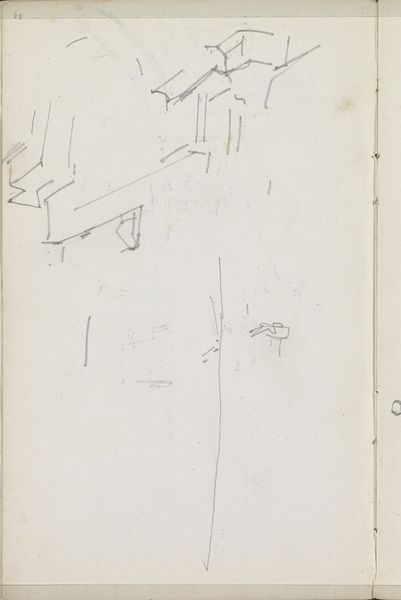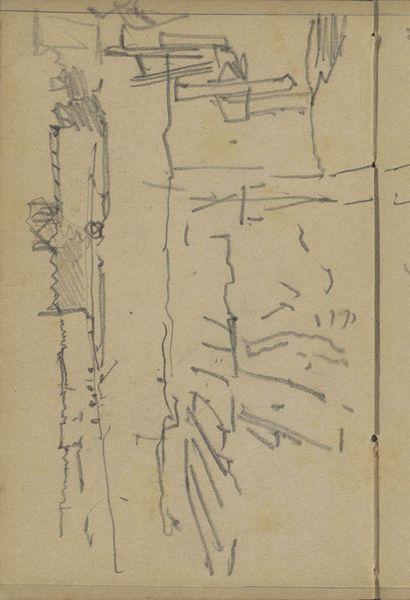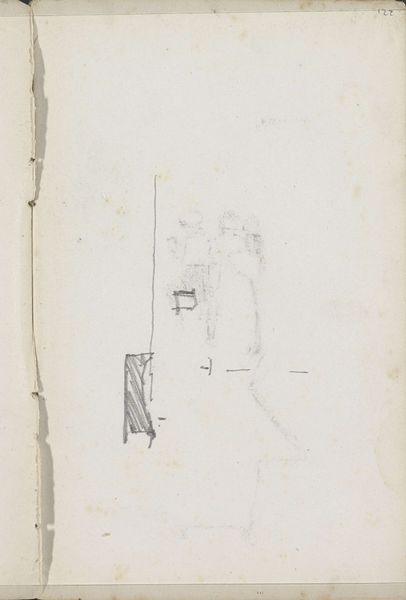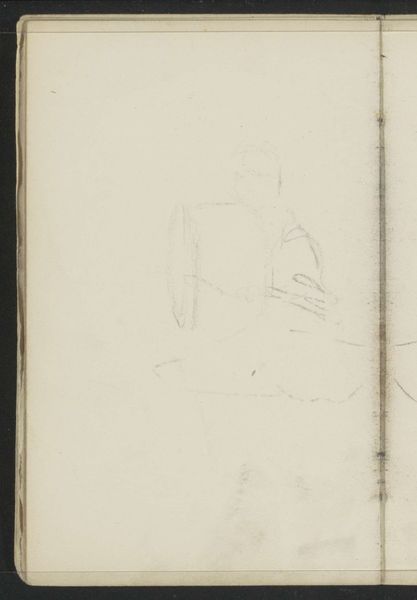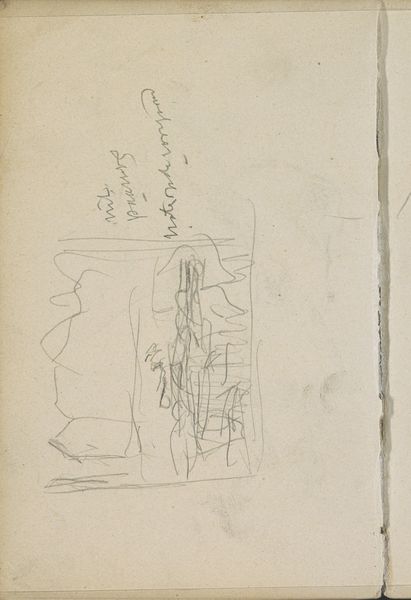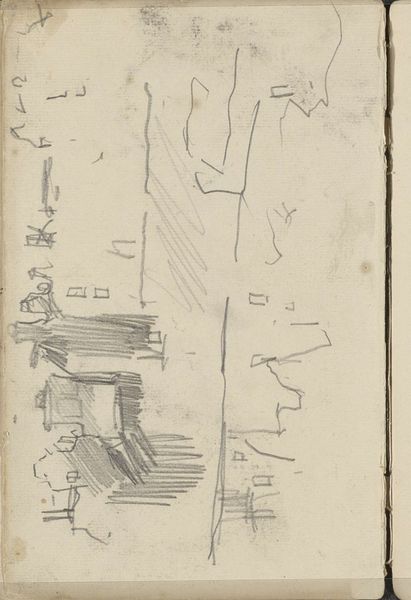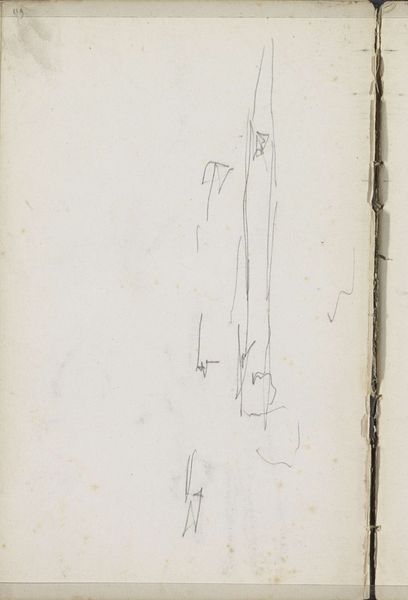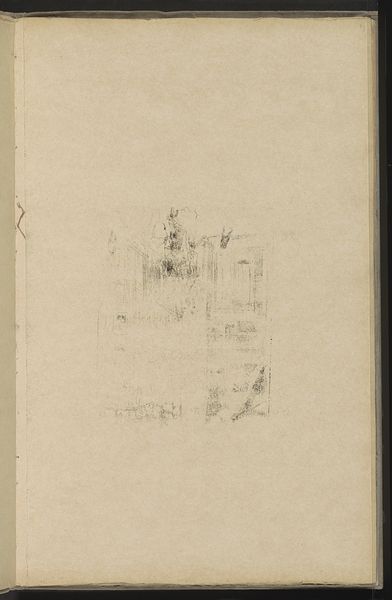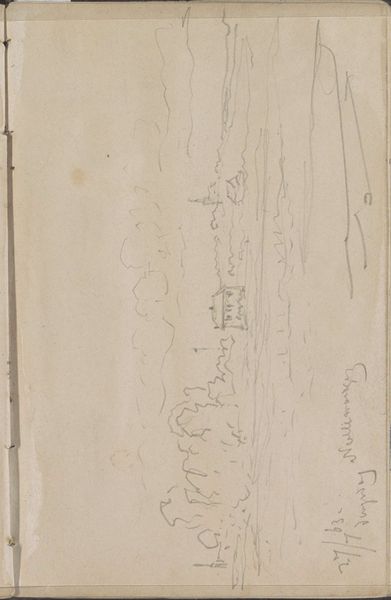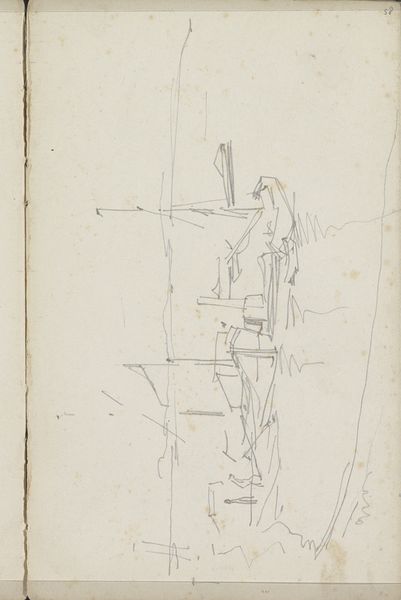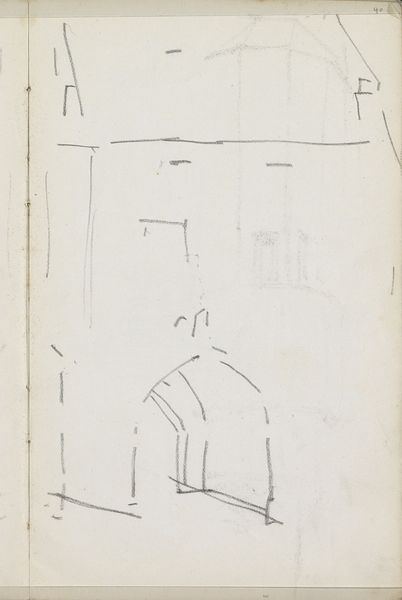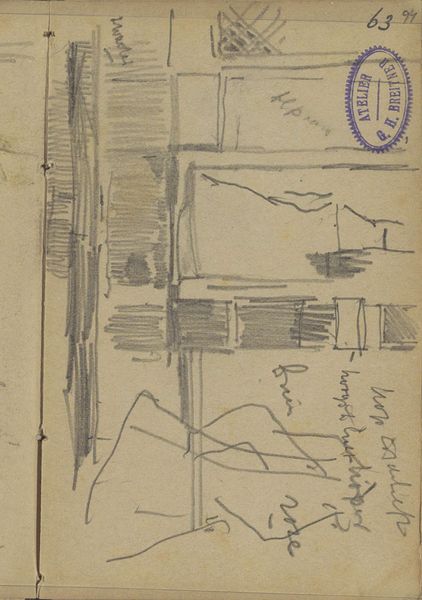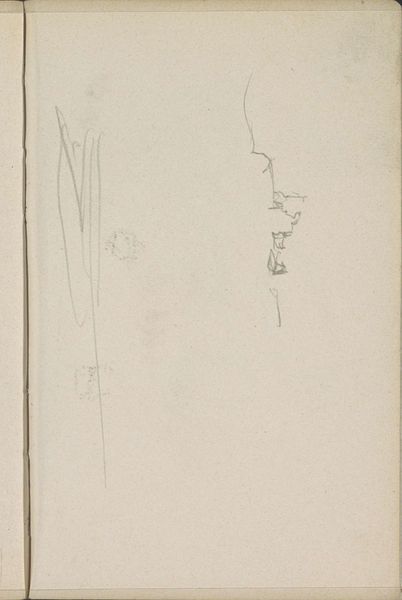
drawing, paper, pencil
#
drawing
#
landscape
#
paper
#
geometric
#
pencil
#
line
Copyright: Rijks Museum: Open Domain
Editor: This is "Huis," a pencil drawing on paper by Willem Koekkoek, made sometime between 1849 and 1895. It's a very faint sketch of a building, almost ghost-like. What do you see in this piece? Curator: I see the bones of a narrative. This isn’t just a house; it’s a suggestion of home, of dwelling, that begs the question: for whom? Given the historical context, we must ask, whose stories are missing from this idyllic landscape? What socio-economic structures underpinned such seemingly simple abodes? Editor: I hadn’t thought about that. It seems very basic and unadorned. Curator: Exactly. The sketchiness invites us to consider the unseen labor, the historical power dynamics embedded within even the most humble dwellings. How do ideas about domesticity intersect with gender roles, class distinctions, and land ownership in the 19th century Netherlands? These lines speak volumes if we listen closely. What feelings does that provoke in you, looking at the piece anew? Editor: It makes me think about who was excluded from that ideal of home, or whose labor built and maintained it. Curator: Precisely. The artwork encourages critical questioning, fostering dialogues around inequality and systemic biases present and past. We must examine art history beyond the surface, finding meaning and activism where we see fit. Editor: I see the artwork in a different light now. It is more than a mere building; it represents the story of human dwelling and invites one to consider how social factors affected individual experience. Thanks for sharing your unique perspective. Curator: Of course, and it works the other way too, because our experiences impact how we look at and react to the visual stimuli of artworks like this.
Comments
No comments
Be the first to comment and join the conversation on the ultimate creative platform.
